Cut some trees to save our forests: A plea from a former wildfire reporter
California is conducting wildfire prevention at a record pace, including logging. This benefits the climate and saves homes, lives and ecosystems. Environmentalists should unite on this issue.
A couple decades ago, when I was a rookie reporter, my phone began ringing nonstop. Lake Tahoe homeowners were freaking out over a Forest Service pile burn that was sending smoke into their neighborhood. They begged me to write about it to convince the Forest Service to stop.
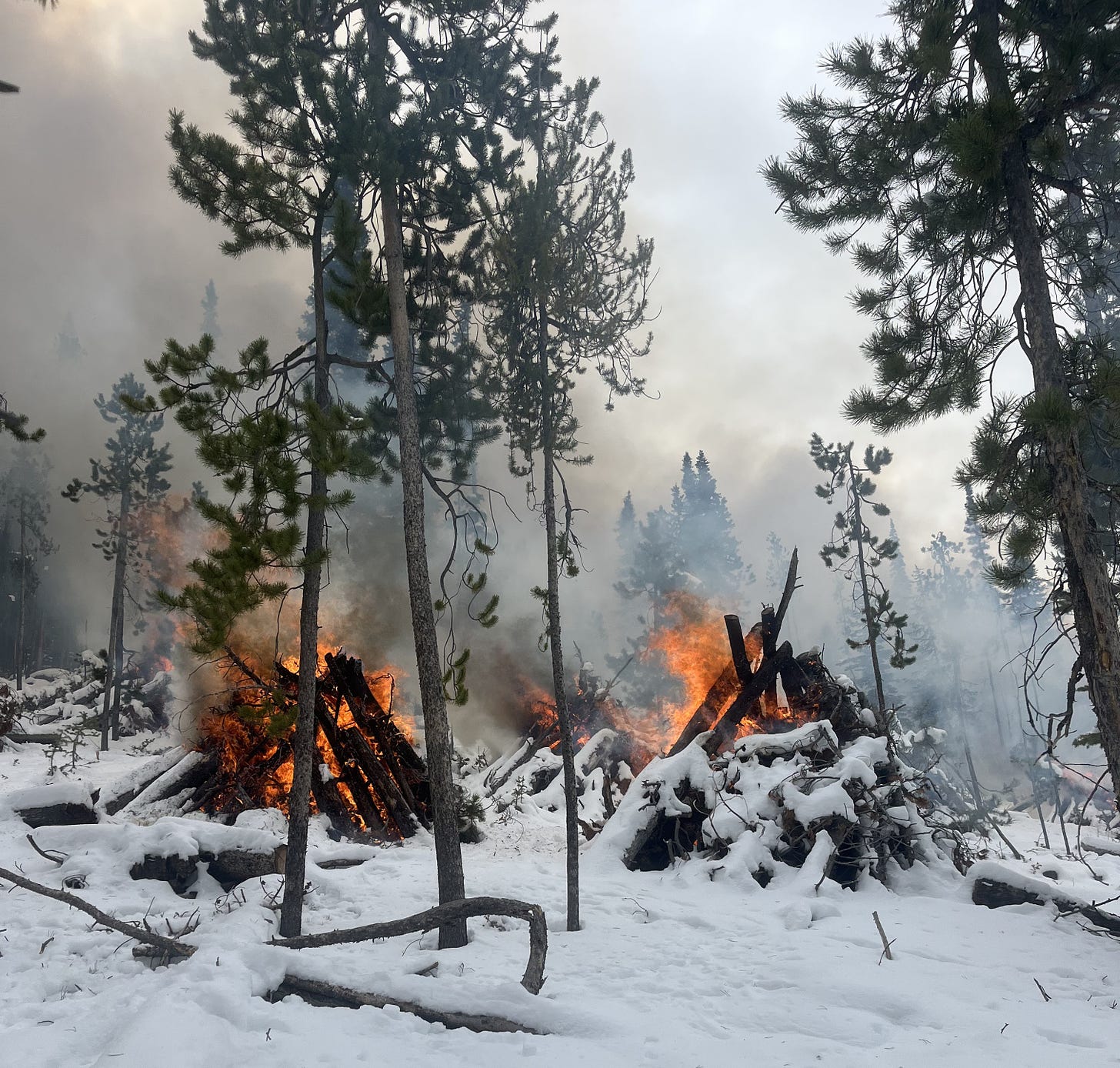
A few years later, this neighborhood survived the 2007 Angora Fire, which burned 254 homes in two hours. Over several days, it charred a total of 3,100 acres. The Forest Service had upset the homeowners by cutting some smaller trees, torching some underbrush, and otherwise “treating” the “wildland-urban interface.” This buffer zone slowed the fire and reduced it to a creeping, low-intensity blaze next to several hundred homes. The people a half mile away were not as lucky. They lived next to a stream that wasn’t treated.1
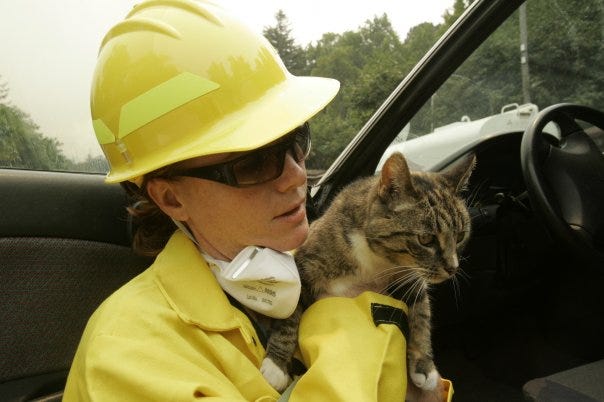
Logging stops megafires
Now, California is burning again. A million acres so far this year, spread across 3,000 fires. Almost half of that acreage was devoured by the Park Fire, a megafire that consumed private timber land, carbon credit projects and an entire wilderness area,2 the most protected type of land in America.
Where’s the hope in any of this? Well, did you know that the State of California and the U.S. Forest Service have committed to a wildfire prevention plan that includes thinning a million acres of forest a year as of 2020? California will deploy beneficial fire on 400,000 acres annually by 2025. That’s millions of acres that won’t burn as hot when wildfires hit. And they will.
A Republican-led administration and a Democratic-led state reached this landmark agreement to save our forests. It includes provisions to accelerate prescribed fire as well as “increase [the] pace and scale of forest management by improving ecologically sustainable timber harvest.” Translation: logging.
This pact indicates that policymakers aren’t as divided as some want us to think about how to tackle the West’s wildfire emergency. Meanwhile, environmentalists aren’t as united. Decades of litigation have slowed wildfire prevention. Well-meaning environmentalists are fighting national reform meant to help battle these fires.
This debate has changed dramatically since the anti-logging movement gained a foothold in the 1980s. Now, carbon emissions are at stake, as well as healthy, pristine old-growth forests that burn down when neighboring degraded forests ignite. The Nature Conservancy and Environmental Defense Fund support logging, not only as a carbon sequestration method to fight climate change, but also a way to manage highly dense, unhealthy, fire-prone forests.
As I write this, the Biden Administration is trying to issue a nationwide rule to protect old-growth forests from logging, but the Sierra Club — stuck in the ’80s— is not satisfied with it. They want to completely hamstring the Forest Service from wildfire prevention work in old-growth forests.3 No thinning. Period. This is irresponsible advocacy, Sierra Club. You’ve misled your members.
The clock is ticking. Our forests are burning. That’s a lot of carbon dioxide.
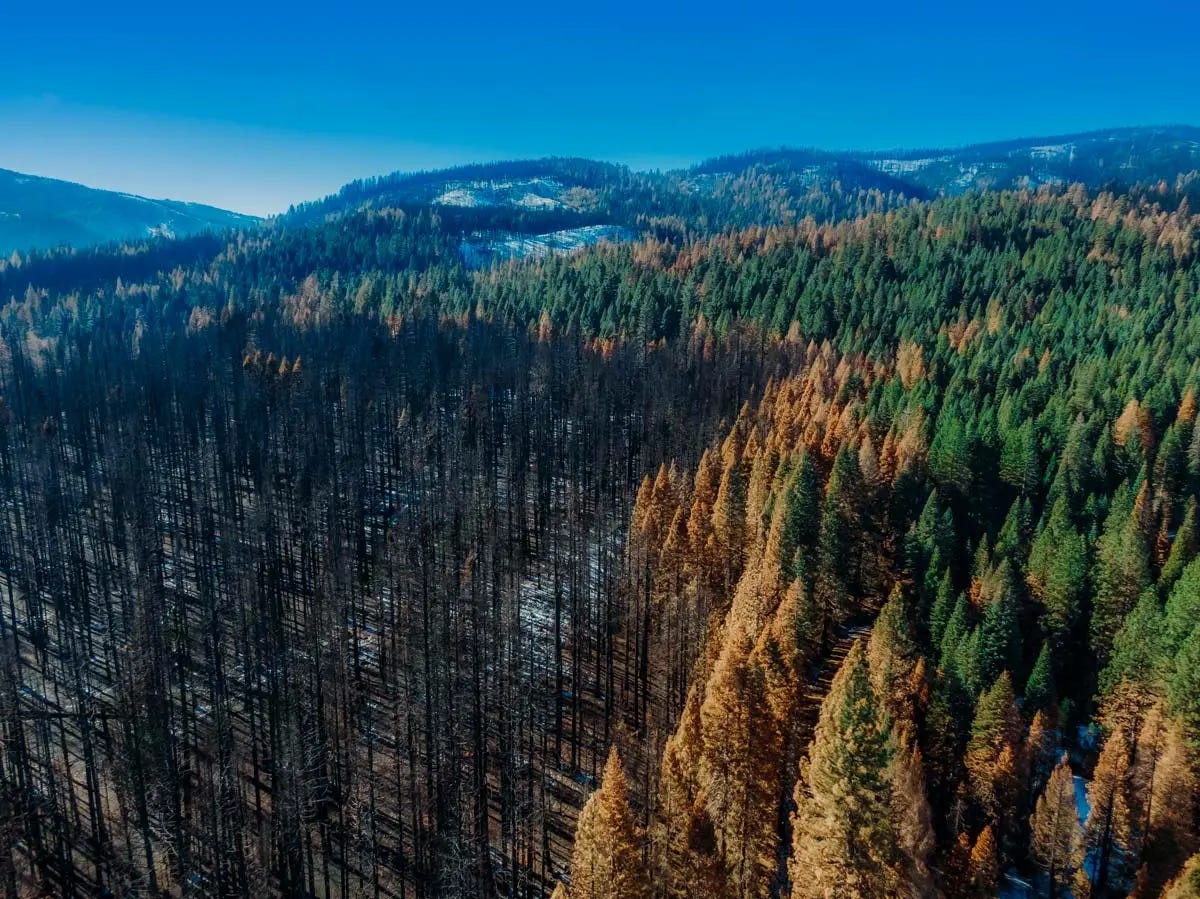
Why does the State of California need to partner with the feds to thin forests? Because our federal government manages half the land in California. About 58 percent of California’s forestland is federal. Overall, 47 percent of California’s total land area is managed by the U.S. Forest Service, the National Park Service or the Bureau of Land Management.
These agencies began using “beneficial fire” to restore forests nearly 50 years ago, but perpetual lawsuits, underfunding, overregulation and climate change have made it an uphill climb.
Beneficial fire and forest thinning reduce the overall vegetation, or “fuel,” that feeds megafires. They save forests, homes and lives. They save clean air and water. They save ecosystems and millions of forest-dwelling creatures. And they save lives.
Forest thinning is a form of logging. It’s time we stop treating the term like it’s a dirty word. Many will quibble with me and say logging takes out big trees while thinning takes out small trees. That’s not always the case.
The true difference? Logging is associated with profit, while thinning is associated with spending. That’s the heart of the matter. The most pressing problem in wildfire prevention is money.
We need to save 30 million acres of forest in California alone. Financially and ecologically, we must deploy all solutions that stop fueling these fires. California and the feds have taken a pragmatic approach by acknowledging that logging is a part of the solution.
Whether it’s traditional timber harvesting, “ecological forest restoration,” as the Nature Conservancy delicately names it, thinning or beneficial fire, I support it all.
Don’t agree? I welcome your thoughts in the comments.
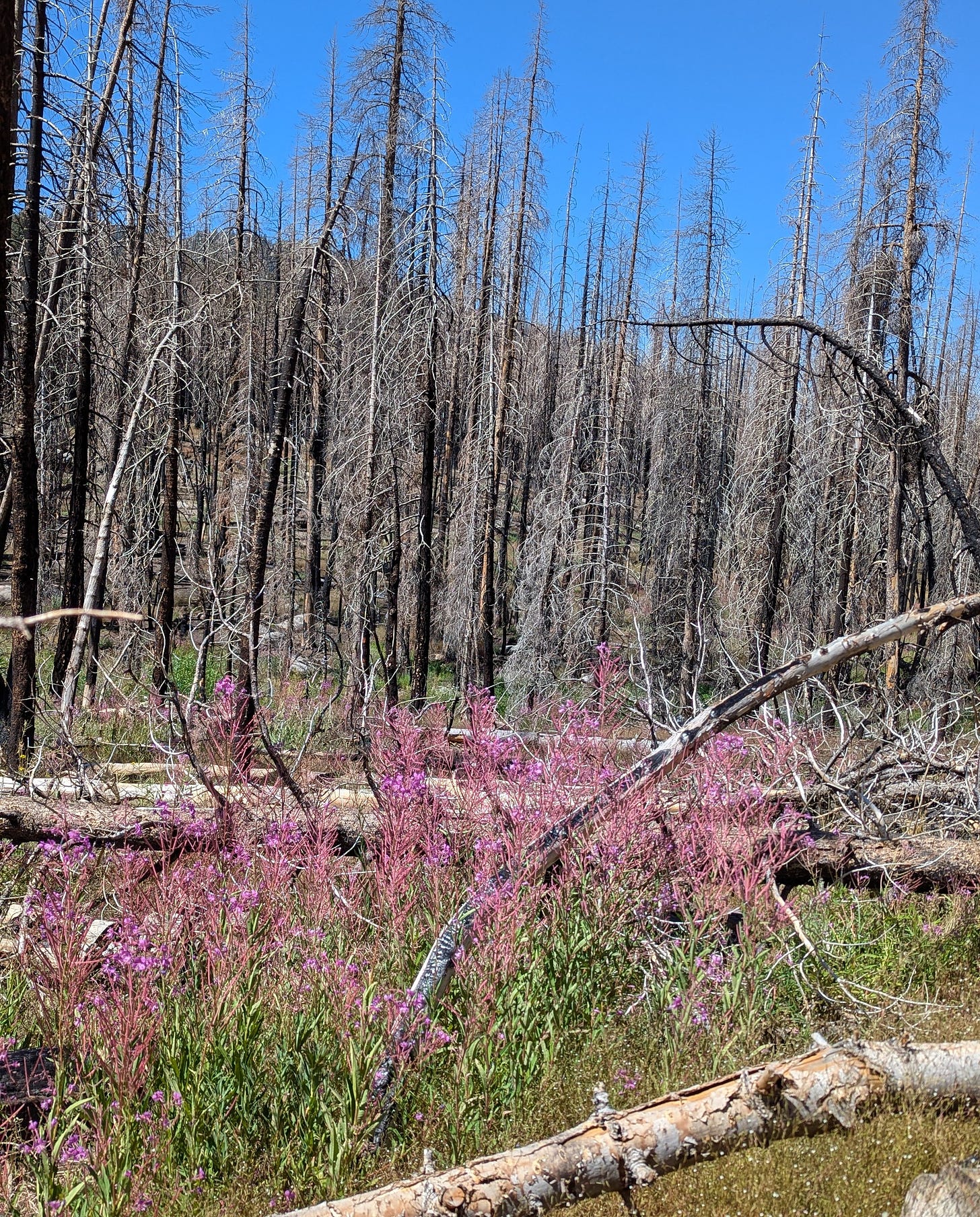
Where do the dead trees go once the forest burns? To a sawmill, a log mortuary, so to speak. The first sawmill in decades opened in Carson City, Nevada, in 2022 to handle the wood from all our fires, which is called salvage logging.
Wood stores carbon, even when it’s been built into a home. If we log some forests into lumber to save them, that’s not a total loss when it comes to addressing climate change. Logging is not as great as a tree left alive, which continues doing the work of sequestering carbon. But with our forests burning at a record pace, that’s a risky gamble.
I don’t want to see California clear-cut. Of course not. But opposing all logging at all costs is old-school, one-dimensional environmentalism.
I’ve breathed the worst air on the planet4, woken to black, apocalyptic skies, and walked through ash skeletons of forests that didn’t need to die — year after year after year — and I’ve begun to think about these things a bit differently.
Chasing wildfires. Chased by wildfires.
I’ve been a wildfire reporter as well as a certified wildland firefighter.5
I’ve evacuated several times from wildfires. My family and I barely escaped the Santa Rosa fire of 2017. It moved at lightning speed after a downed power line ignited vegetation a few miles from us. It quickly reached the only road out from a little inn deep in the forest where we’d planned to spend the night. That fire chased us roadside, a red, billowing demon sprinting through the woods parallel to us as we rushed, hearts bursting with fear, baby girl and old dog in the backseat, driving a hard, dark, curvy road for over an hour.
A horse, featured in the short video below, haunts me to this day. I tell myself it jumped the fence and survived.
Christmas Valley Miracle: A neighborhood saved by “logging”
In 2021, the Caldor Fire, a climate-change-fueled-megafire raging at peak intensity, somehow leapt over a mile-wide glacial valley filled with pines, sparing a neighborhood called Christmas Valley in South Lake Tahoe.
This dumbfounding event of fire forgiveness earned the name “Christmas Valley Miracle.” Some said it was God. Others said it was the bravery of the 4,000 firefighters from multiple states, some as far as Montana, who stood watch on every block of the neighborhood (thank you, firefighters💟).
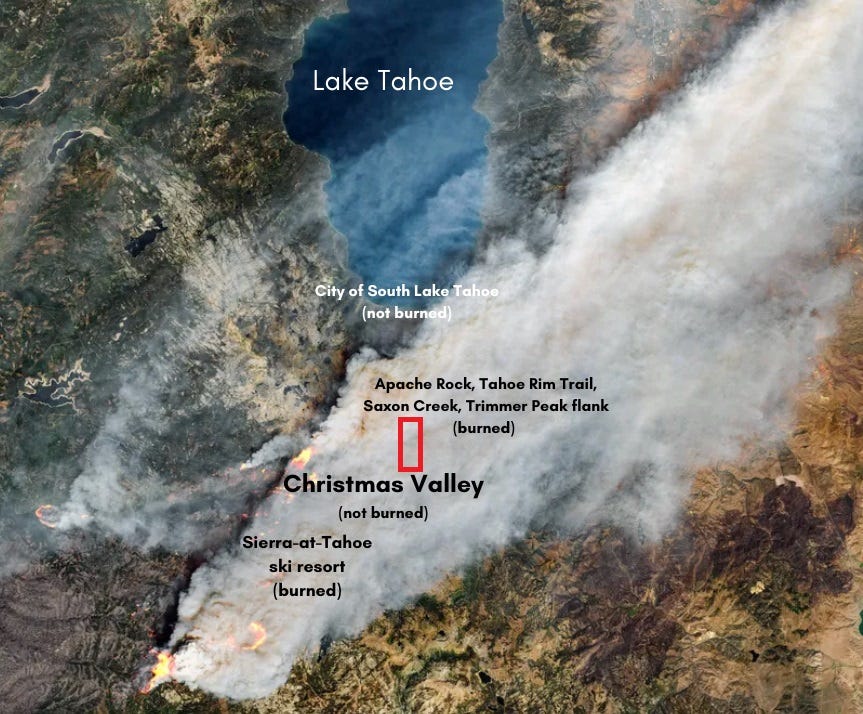
I, and others, say it was also forest thinning and defensible space that saved the town: The Forest Service had created a buffer zone around Christmas Valley several seasons prior. The neighborhood had taken defensible space very seriously.6 What’s defensible space? Reducing fire fuels around a property, including logging, if necessary.
Firefighters reported that the fire died down and became much easier to control once it hit the buffer zone of thinned forest. Meanwhile, the wind blew at full ferocity, and giant fireballs flew over their heads like missiles aimed at the valley’s far side. Outside the buffer zone, Caldor quickly ignited into a crown fire once again.7
Why did all homes and communities in Lake Tahoe survive while 782 homes and 18 businesses outside of Lake Tahoe burned in the Caldor Fire? Money. For decades, the special Forest Service unit in Lake Tahoe has received extra funding for wildfire prevention from the Lake Tahoe Restoration Act, while the El Dorado National Forest, where Caldor started, has remained as poor as other districts.
Caldor started as a grass fire in a highly neglected forest. It travelled 73 miles over one month, eventually consuming 222,000 acres.
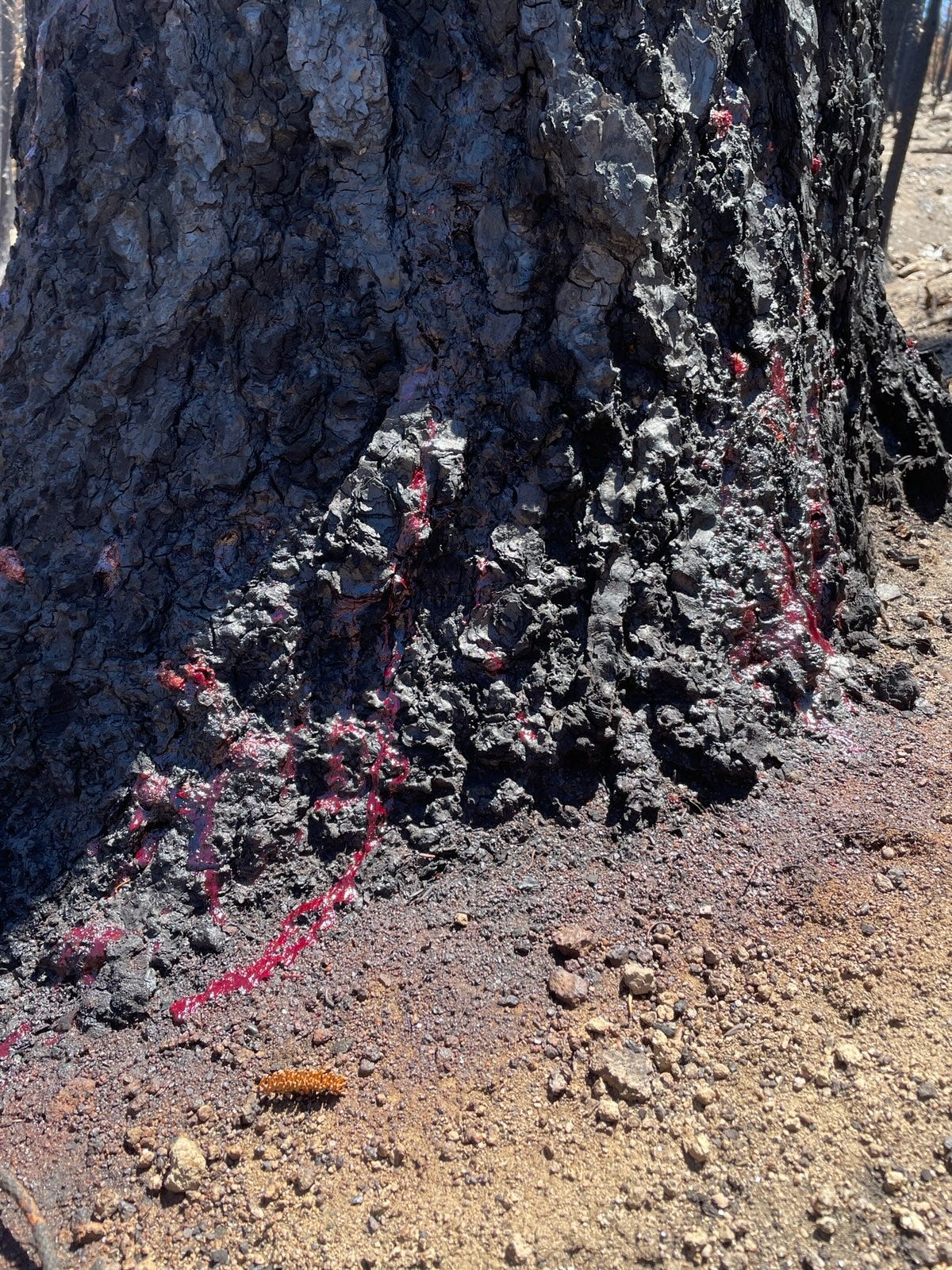
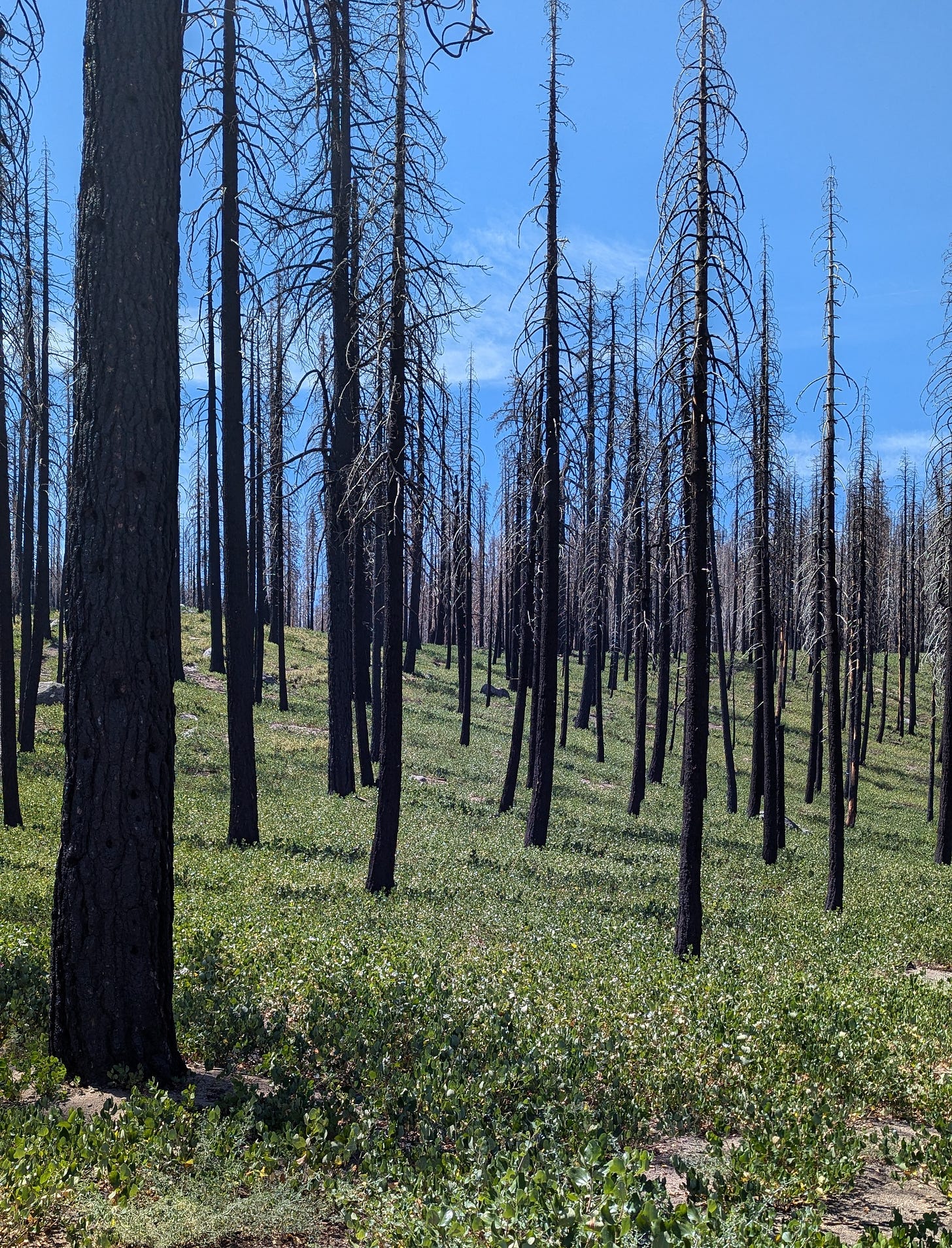
Federal agencies that manage half of California’s land are dirt poor
The fate of California’s ecosystems, air and water, the health of its citizens, and the vitality of its economy are in the hands of the country’s poorest federal agencies.
Forest Service nationwide budget in 2024: $9.73 billion.
Bureau of Land Management nationwide budget in 2024: $1.7 billion
National Park Service nationwide budget in 2024: $3.33 billion
U.S. Department of Defense budget in 2024:
$2.1 trillion
For comparison, California yearly GDP is $3.8 trillion
Cutting down and hauling off trees is extremely expensive. Heavy equipment and roads cost money. Hiring expert personnel like arborists, biologists and firefighters, needed to survey and monitor thinning or prescribed burn areas, also requires resources. Private tree removal costs between $400 and $5,000 per tree, depending on size. A timber company does it for free. I mean, a logging company.
In some areas in California, 50 to 90 percent of the trees need to go in order to save the rest of the forest.8
I know, it’s hard to say goodbye to any tree. But should it die in a wildfire instead?
Not all fire is bad
If you’re reading this, you’ve probably heard this before: The forest ecosystems of the American West evolved not only to survive low-intensity fire but also to thrive with it. Many species flourish after fire, including giant sequoias, black-backed woodpeckers, mule deer and, apparently, wolves. California’s newest wolf pack was first discovered several hundred miles south of its nearest relative, in Sequoia National Forest, which had recently burned. Biologists suggested wolves chose the area because it provided better line of sight to prey. Studies have shown mule deer prefer recently burned areas, which often bloom with healthy, fresh underbrush within a couple of years.
Historically, fire consuming a million acres per year is normal for our ecosystems. The first white settlers described skies filled with smoke all summer. Mega-fires, on the other hand, are not normal. We know how to prevent them.
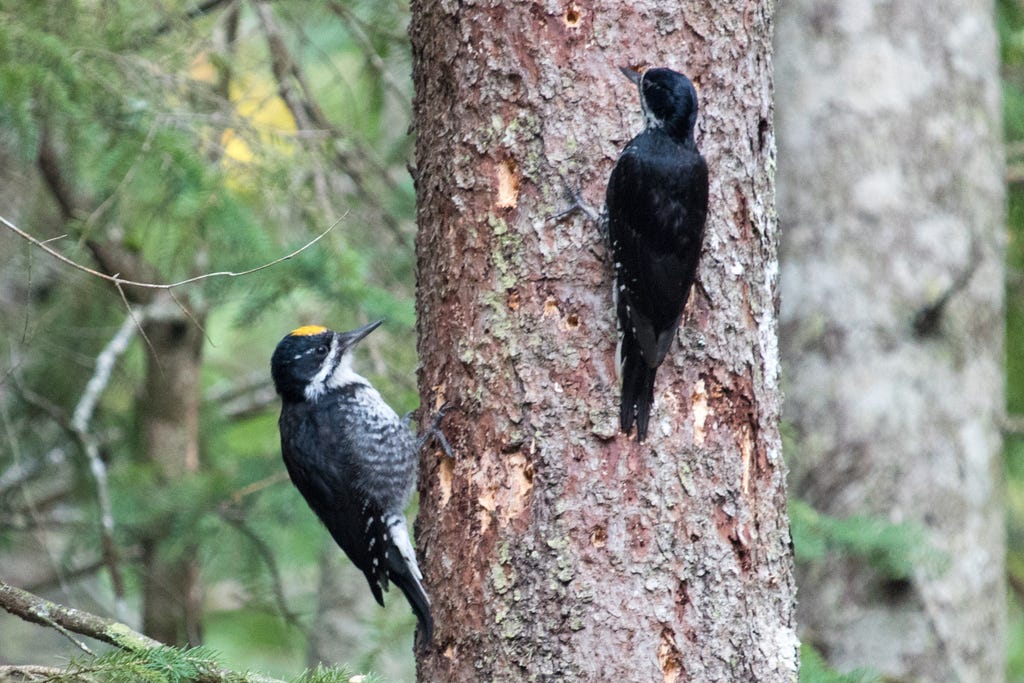
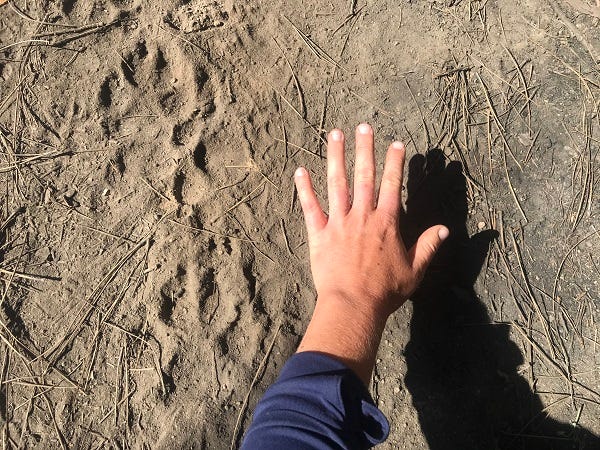
Litigation and regulations are slowing progress
Most mainstream news coverage of the West’s wildfires contains a paragraph that goes something like this: “After a century of fire suppression and mismanagement, forests in the West are overgrown, causing fires to burn hotter …”
This is inaccurate and incomplete. The time period of widespread and complete fire suppression spanned 45 years from 1926 to 1971, changing in the 1970s when the U.S. Forest Service started its “let it burn” policy. The first prescribed fires were lit in the ’70s. By the 1980s and ’90s, all agencies in charge of forests were beginning to use prescribed fire as a tool in wildfire prevention. Our problems would be much worse if this weren’t the case.
Other factors contributing to declining forest health:
Decades of lawsuits from environmentalists, some justified, who equate forest thinning with clear cutting.9 Eighty percent of these lawsuits fail.
Opposition to national reform by old-school environmental groups.
Money, money, money: Poor federal and state agencies with inadequate wildfire prevention funding.
Climate change: Hotter and drier year-round weather is preventing planned prescribed burns or causing them to run out of control.
National and state environmental regulations. Even projects as small as 5,000 acres require extensive reviews under the National Environmental Policy Act, ensuring protection for sensitive resources or endangered species, but adding five to ten years to a given project’s timeframe, or stopping projects altogether. Check out The Lookout’s Zeke Lunder, a wildfire mapper, talk shop with another wildfire expert, including gripes about NEPA.
Air quality regulations that restrict when prescribed fires can be ignited, sometimes leaving the Forest Service just a few days a year to conduct burns. Prescribed fires, like wildfires, pose significant air quality concerns. They can’t proceed if air quality has already reached a maximum particulate level. This can delay prescribed fires by years.
Water quality regulations that restrict work in riparian habitat, called “stream zones.” Heavy logging equipment damages streams. Regulators prefer that this work be done by hand, which is more expensive. Therefore, streams become low priority. This often results in dense streamside corridors where wildfires blow up out of control. The Angora Fire was one of these.
The legacy of clear cuts that were replanted too close together, where trees are all the same age.
Private land burn permits. California regulations and permitting requirements have slowed down burns on private land. These requirements were loosened in 2022.
Lax defensible space enforcement. Municipalities have no money for wildfire prevention and are slow to enact and enforce defensible space laws covering private property.
Public awareness: Inadequate public understanding of the issues. Inadequate media coverage. Longstanding polarization around and monetization of the word “logging.”
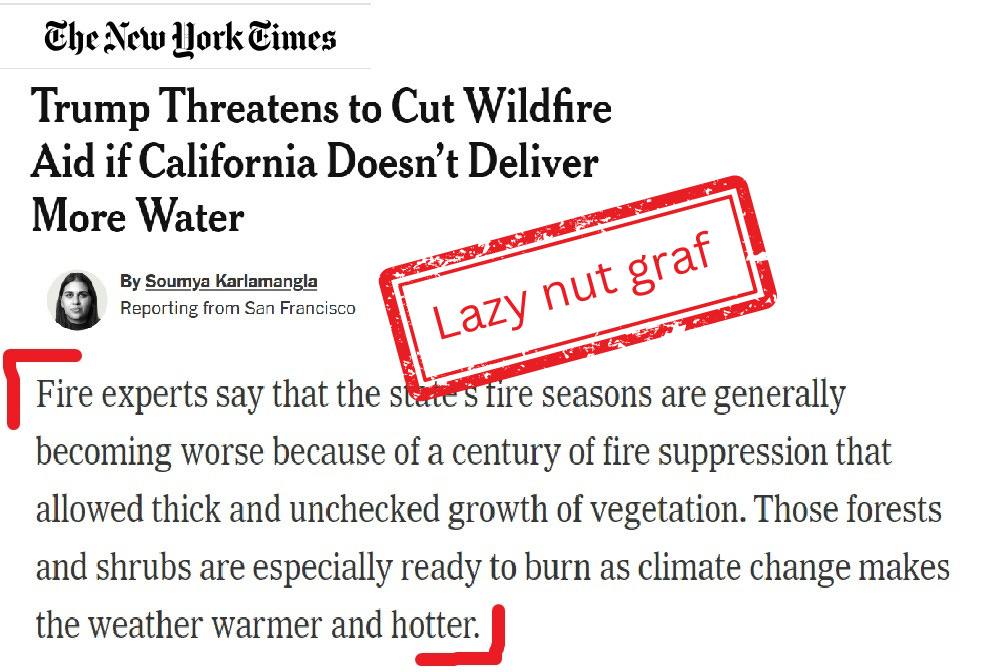
Anger and “nope” are not going to get us there
We lost a lot in the Caldor Fire. Trails, streams, a ski area and vast swaths of old growth — beautiful giant sugar pines that once whispered to me ancient secrets of the wilderness — won’t return to their former glory in my lifetime. Caldor spared a favorite place of mine, Christmas Valley, under bittersweet circumstances.
The rub: I was certain this fire would happen. Ask my family. For years, every time we drove those miles of Highway 50 crowded with the densest trees on the planet, I’d say, “This is all going to go up in flames one day.”
And it did.
I’ve been ruminating on this story for a long time. When
at ’s “Heated” railed against logging in their recent piece, it got me thinking again.Apparently, some conservative think tanks — like the rest of us — are looking at increased logging as a solution to the West's wildfire emergency, and Emily and Arielle want you to be angry about that.
First of all, to get traditional environmentalists angry, one must only say “logging.” Second, say “profit.” Third, say “conservative think tank.” Now, you’re angry. Now what? Are we going to solve this with a bunch of “nope”?
These stories, including this week’s opinion pieces by the Sierra Club,10 irresponsibly shout the word “logging” to bait well-meaning environmentalists into opposing some of the strongest tools in our toolbox.
Eventually, the “Heated” article concedes that “commercial logging can be part of a good wildfire prevention and management strategy.” But then the writer quotes several people who think logging is bad all the time, plus studies that prove it’s bad. 🤔 Her seven ecologists push prescribed burns. Great! Where’s the money? Where are the thousands of expert personnel? Should we keep doing these burns 5,000 acres at a time, each accompanied by $1 million in environmental reviews that last five to 10 years? And, when do we conduct them? Climate change is shrinking the days when we can safely accomplish prescribed burns. How do we handle that?
By the end, I wasn’t sure how “Heated” thinks we’re going to make it to the finish line. They don’t tackle the main issue: MONEY. Maybe finding solutions is not their objective.
Once again, we must save 30 million acres of forest in California alone. Carbon credit projects are going up in smoke. Old-growth giant sequoia stands are succumbing to megafires. One fire season can negate decades of emissions reductions. Our climate emergency necessitates that we keep carbon in wood, some way, somehow, living or dead.
Finally, please remember that firefighters place their health at immense risk to fight for the forests we fail to protect. Not only do wildlife die in wildfires, but also firefighters, property owners, elderly and pets.
When we’ve saved forests in the past, we’ve done it by leveraging all the tools in our toolbox. Let’s get it done!
“God has cared for these trees, saved them from drought, disease, and avalanches; but he cannot save them from fools, — only Uncle Sam can do that.”
— John Muir

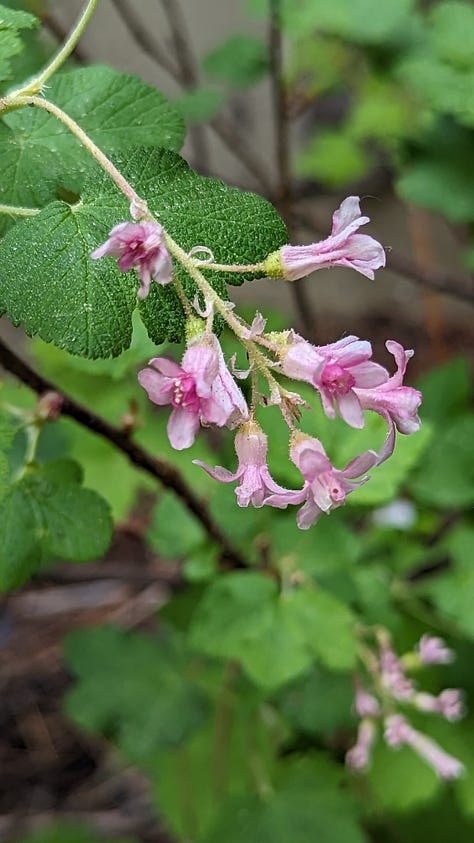

About Earth Hope:
Earth Hope is a solutions-based journalism project that highlights environmental success stories from around the globe, because hope is the foundation of progress. Consuming bad news is important, but we should also remind ourselves frequently that progress happens every day. Read more about this project and what inspired it.
About me:
I’m Amanda Royal, a former newspaper reporter who covered wildfires, invasive species, water quality, wildlife and other environmental topics in California and Nevada (while writing under my maiden name and byline Amanda Fehd). The pseudonym “Earth” was a bit accidental. It grew on me quickly, so I thought I’d keep it for a while. I’m new to Substack as of late July 2024. Thanks for the wonderful reception!
For those familiar with South Lake Tahoe, the Upper Truckee neighborhood under Flagpole Peak did not burn, while the homes near Angora Creek did.
Ishi Wilderness
“Old growth” here is defined as forests containing a certain diameter of trees, not by how healthy or complete their ecosystem is. Forests with large trees can still be unhealthy due to our poor past decision-making. Did you know that young trees consume as much water as old trees? During extended drought, old trees suffer more if young trees are starving them of water.
600 parts per million
I attended the five-day boot camp, fought a few tiny fires while volunteering for the Forest Service, but was too scared to continue. The course launched my interest in wildfire.
With help from Tahoe Resource Conservation District and Lake Valley Fire Protection District.
This account is based on news stories, discussions I had with firefighters who were on the ground that night, plus property owners who defied evacuations to defend their properties that night. I also watched the fire live on an infrared camera feed. This fire was charging full speed when it leapt across Christmas Valley.
This is my opinion based on personal observations. Studies concur. Any true percentage would be based on the specific forest in question.
I understand the concern but I have never personally seen a forest thinning project remotely resembling a clear cut. I support the tension that watchdog groups create by their mere existence, keeping a check on the greed of big business. But, some of this is just too old-school.
Sorry, paywalled. X




Great in-depth report. I agree with you and the need to invest more time and funds into ecological logging. Part of my upbringing was in California and mostly raising myself. At age eight, I learned from neighbors how to water the roof of my home as a wildfire burned dangerously near. As a photojournalist I covered too may fires. Smoke inhalation is not a good thing. Liked the kitty rescue story :)
thanks for this great read, informed by your deep experience. It's clear that true solutions to our multiple crises are not well-served by dogmatic positions, even well-intentioned ones. You offer well-reasoned arguments supported by deep understanding of the local history and ecosystems, exactly what our world needs more of.